It happens to us all at some point while we are working on an art project, a DIY gift idea, or something else. We reach for that one specific color of paint that will be just perfect, and there is none to be found. When that happens, we could simply choose another color, but that is never as satisfying as using that one perfect color. But what happens if we don’t have time to stop, run to the store, and grab the color we need? We mix it ourselves, of course!
As we know, there are three primary colors in the color wheel. Those are red, blue, and yellow. However, our projects would be quite boring if those were the only three colors we were ever able to use. That is where secondary and tertiary colors come into play. There are three secondary colors – purple, green, and orange – and six tertiary colors. This guide will help you learn to make many of these different colors through color mixing.
Because some of the colors I am going to discuss require the mixing of secondary colors, I am first going to explain how to make those three secondary colors.
What Colors Make Green?
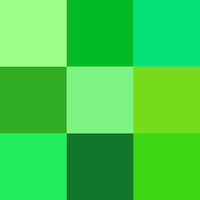 To make the color green, you will first need the two primary colors blue and yellow. If you mix equal amounts of blue and yellow paint, you will have what is referred to as ‘pure green.’ However, we know just by looking at the trees and grass around us that there are many different shades of green that we might decide to use. To get these different shades of green, you simply vary the ratio of blue to yellow paint in your mixture. If you want a cooler shade of green, you should mix more blue into your mixture; alternately, if you want a warmer shade of green, you will need to add more yellow.
To make the color green, you will first need the two primary colors blue and yellow. If you mix equal amounts of blue and yellow paint, you will have what is referred to as ‘pure green.’ However, we know just by looking at the trees and grass around us that there are many different shades of green that we might decide to use. To get these different shades of green, you simply vary the ratio of blue to yellow paint in your mixture. If you want a cooler shade of green, you should mix more blue into your mixture; alternately, if you want a warmer shade of green, you will need to add more yellow.
These instructions are assuming that the yellow and blue paint you are using initially are pure yellow and pure blue. If the yellows and blues you are working with have been altered from their pure forms, it will consequently alter your green as well. For instance, if you are looking to make a light green, you should mix yellow with a light blue instead of a pure blue. Adding black or white to your green will also darken or lighten the shade of green.
Note: Adding black or white to any color will darken or lighten the shade of that color.
What Colors Make Purple?
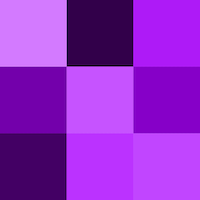 The second secondary color in the palette is purple. Purple can be created by mixing the primary colors of red and blue. An equal mixture of pure red paint and pure blue paint will result in a pure purple. However, this ‘pure purple’ is often darker than most people like. To get a nice, bright purple, you will want to use a magenta color instead. You can then mix the magenta with a blue or a cyan, and voila! You will have bright purple.
The second secondary color in the palette is purple. Purple can be created by mixing the primary colors of red and blue. An equal mixture of pure red paint and pure blue paint will result in a pure purple. However, this ‘pure purple’ is often darker than most people like. To get a nice, bright purple, you will want to use a magenta color instead. You can then mix the magenta with a blue or a cyan, and voila! You will have bright purple.
If you do not have access to the less common colors, such as magenta and cyan, another option for creating a brighter or lighter purple is to combine your blue and red paints and then add in a bit of white to lighten the darker color.
What Colors Make Orange?
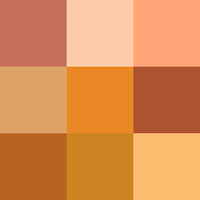 The color orange is created by mixing red and yellow together. As with all of the other secondary color combinations, creating equal parts yellow and red will give you ‘pure orange.’ For a lighter, brighter shade of orange, add more yellow to the mixture. For a darker, more fall-colored orange, add more red into the mixture. Once you have the shade you want, remember you can further lighten or darken it by adding white or black, respectively.
The color orange is created by mixing red and yellow together. As with all of the other secondary color combinations, creating equal parts yellow and red will give you ‘pure orange.’ For a lighter, brighter shade of orange, add more yellow to the mixture. For a darker, more fall-colored orange, add more red into the mixture. Once you have the shade you want, remember you can further lighten or darken it by adding white or black, respectively.
Now that you know how to create the secondary colors, we will move on to other colors.
What Colors Make Brown?
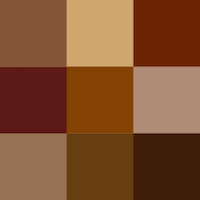 To make the color brown, there are actually three different color combination options you can choose from depending on the exact shade of brown you are looking to create. First of all, mixing red and green in equal measure can give you a nice shade of brown. To make a more reddish brown, add a little extra red into this mix.
To make the color brown, there are actually three different color combination options you can choose from depending on the exact shade of brown you are looking to create. First of all, mixing red and green in equal measure can give you a nice shade of brown. To make a more reddish brown, add a little extra red into this mix.
Another way to make brown is to mix the three primary colors together. Doing this gives you less control over the mixture than simply mixing two colors together, but it does allow you to make a variety of shades of brown. When using all three colors, mix in more yellow to get a lighter shade of brown, blue for a darker shade of brown, and red for a darker but reddish shade of brown. Be careful with this method; if you mix too much of the three colors, you will make black instead of brown.
Finally, you can use purple and yellow to make brown, as well. Make your purple first from red and blue, then add in some yellow to make brown. The yellow will lighten the purple quickly, so do not add too much at first. Start by using a small amount of yellow to change the shade from purple to brown; then, if you want it lighter, you can add more yellow until you get the desired shade of brown.
What Colors Make Black?
 Because black is essentially the absence of color, it is one of the easiest and – for me – most fun colors to create. You can make black by mixing your three primary colors together. Doing this can make brown, as well, but the more of the colors you add, the darker it will become until finally, it is black. You can also create black by using complementary colors. Complementary colors are colors that are directly across from one another on the color wheel. These include red and green, orange and blue, and yellow and purple. These colors essentially cancel out one another to make black.
Because black is essentially the absence of color, it is one of the easiest and – for me – most fun colors to create. You can make black by mixing your three primary colors together. Doing this can make brown, as well, but the more of the colors you add, the darker it will become until finally, it is black. You can also create black by using complementary colors. Complementary colors are colors that are directly across from one another on the color wheel. These include red and green, orange and blue, and yellow and purple. These colors essentially cancel out one another to make black.
If you are looking for a more smoky black, charcoal, or gray, add white to your mixture. At first, it will lighten the hue of the black to a lighter black, and as you add more white, it will lighten to gray. The more white you add, the lighter your gray will become. It is also important to note that mixing a particular shade of black is difficult and hard to replicate, so make sure you make enough for whatever you need the first time. Otherwise you might not be able to create the same hue of black again.
What Colors Make Pink?
The easiest and most common way to make pink is to combine red and white paints. Choose your red shade first, and then begin to lighten it with your white. For darker pinks, mix in only a small amount of white paint. For lighter shades of pink, add more white.
What Colors Make Red, Blue, and Yellow?
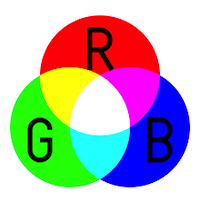 Because red, blue, and yellow are the three primary colors, you can’t actually make them from other colors. Some proponents of Subtractive Color Theory argue that you can make the three primary colors, but it is a difficult and confusing argument. For all intents and purposes, the three primary colors cannot be created; they can only be altered. You can combine them with other colors to make different shades. For instance, mixing white with blue will create a lighter blue, while mixing orange with red will create a fiery, reddish-orange type color. These are the only things that can be done to the primary colors.
Because red, blue, and yellow are the three primary colors, you can’t actually make them from other colors. Some proponents of Subtractive Color Theory argue that you can make the three primary colors, but it is a difficult and confusing argument. For all intents and purposes, the three primary colors cannot be created; they can only be altered. You can combine them with other colors to make different shades. For instance, mixing white with blue will create a lighter blue, while mixing orange with red will create a fiery, reddish-orange type color. These are the only things that can be done to the primary colors.
That sums up the most oft-used colors of the color palette. Hopefully, I was able to help you understand how to create some of your favorite colors. The next time you find yourself with no brown in your paint supplies, I hope you’ll remember to consult this guide.


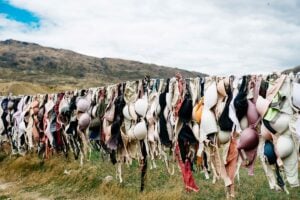
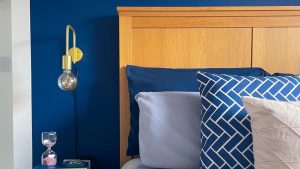
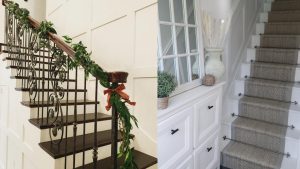
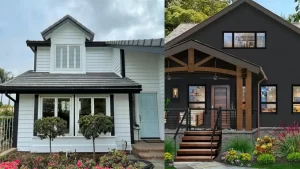
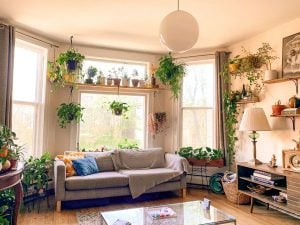
I’ve painted a wall in burnt orange and I don’t like it…is there any other color I can paint over the top of it to make it lighter
Um i forgot how to make red it been so long that now I forget and now I do not know how to make red I forget sometimes when it has been a long time then I forget
Annie,
you could apply a wash over the burnt orange, or tinted glaze – this can be a darker or lighter layer depending on what you want – test a corner first to see if you like the effect – a glaze/wash will be a clear base with a percentage of color – you will have to mix this yourself unless you have a paint place nearby to do it for you
Anya,
Red is a primary color, not to be mixed from anything – after the initial base color you can however adjust its tone – add yellow to warm it up, add blue to cool it down
I have red curtains I want to dye them but don’t know what colors with the red I could do
Why does it mention subtractive color theory at the end but show a picture of the additive color mixtures?